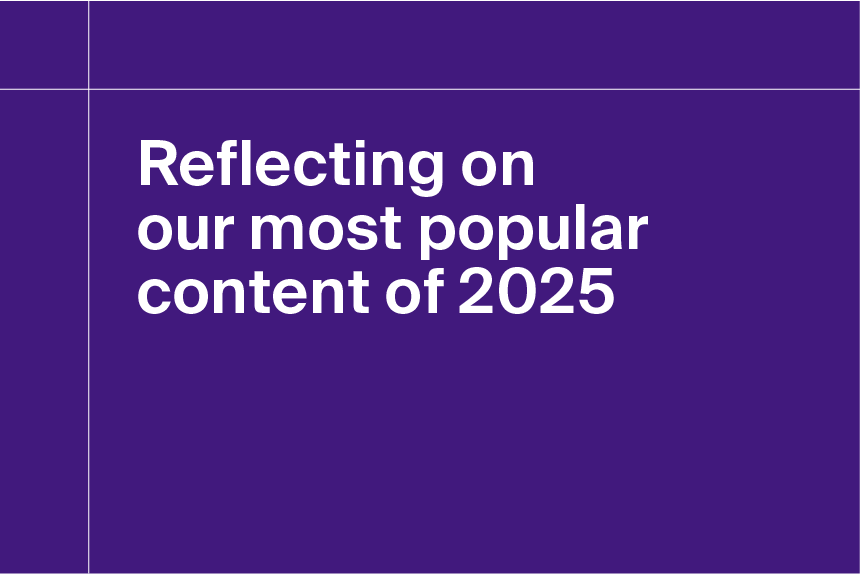4 ways providers use healthcare commercial intelligence to support patients and grow business
Jan 5th, 2024

It’s an exciting, disorienting time to be a healthcare provider in America.
Between lingering pandemic impact, healthcare consumerization, AI's growing prominence, and shifting care fundamentals, it’s not always easy to get your bearings in this rapidly changing industry.
Whether you’re an independent physician or the head of a provider organization, your proverbial compass likely points toward four overarching goals to drive revenue while maintaining high-quality care: (1) network integrity, (2) growth and expansion, (3) patient acquisition and retention, and (4) contracting strategy.
Achieving these goals requires knowledge of the service area—the patients, consumers, institutions, and other healthcare professionals that make up the market.
Many providers use clinical and consumer intelligence—such as claims, billing data, and social determinants of health data—which they leverage to make more impactful business decisions, understand potential market opportunities, and gain insight into the patient journey.
In this blog, we’ll dive into four valuable ways providers can use market intelligence to support better patient outcomes and drive growth.
Use claims data to inform decisions and unlock opportunities
When providers need to know the who, what, where, when, why, and how behind any clinical encounter, all-payor claims data offer the inside scoop.
Diagnosis, treatment, and prescription patterns can all be gleaned by examining the billions of claims these events produce every year. From these patterns, providers can strategize for business development, more narrowly target their marketing efforts, and spot market opportunities.
For instance, claims data can make it easier to segment and target providers, identify opportunities to earn new business, and expand key service lines. For example, claims can determine which physicians are treating which patients and where—useful information for provider groups seeking to close specialist staffing gaps, or for independent physicians seeking to expand outreach efforts.
On the marketing side, claims data can help prepare for conversations with hospitals, vendors, and other providers by painting a fuller picture of their business and their competition. Diagnosis and procedure claims can help organizations identify healthcare professionals in their high-value service lines who can support their organization.
Imagination is the limiting factor here: Whatever questions you have about patients, service lines, facilities, and fellow providers, the answers are most likely just a claims analysis away. Of course, having the right analytical tools makes the job a lot easier.
Map provider, payor, and facility relationships using reference and affiliation data
Provider affiliations and the payors involved heavily influence point-of-care decisions. To get ahead in the market, healthcare professionals need to understand who’s affiliated with whom and how strong those affiliations are.
A combination of claims data, regulatory data sets, and good old-fashioned research can help map physician relationships across healthcare organizations, facilities, and payors.
With a little extra legwork—or reliable healthcare commercial intelligence—it’s possible to get a good idea of affiliation strength based on the history and context behind those relationships. This gives providers some insight into potential opportunities for partnership, investment, mergers, and acquisitions.
Referral patterns are also useful indicators of the relationships between providers and networks. By examining referrals to in- and out-of-network providers, you can spot sources of patient migration and target the healthcare professionals or facilities who might be influenced to send referrals your way.
Shape provider strategies around the patient journey
Every patient’s journey is unique, but that doesn’t mean those journeys are inscrutable.
Real-world data makes it possible to analyze the healthcare experiences of highly specific patient cohorts: Where and from whom they’re receiving care, what kind of care they’re receiving, and the outcomes that care produces.
With this information, you can create strategies to improve patients’ journeys and simultaneously grow your business. That might mean acquiring better patient-facing technology, expanding service lines, training staff on new or in-demand procedures, or identifying facilities with poor performance and allocating resources toward improvement.
More positive patient experiences lead to more loyal patients, reducing network leakage, improving care outcomes, and boosting reimbursement.
Leverage consumer data for powerful results
Lastly, let’s not forget how powerful consumer-level data can be when it comes to understanding the patients in your market and their behaviors and preferences. Consumer data encompasses the following types of data:
- Medical and prescription claims
- Clinical data (Like EHR records and doctors’ notes)
- Consumer demographics and other descriptive data points
- Social determinants of health
When used correctly (and tactically), consumer data has the potential to influence everything from marketing and sales strategy to patient/provider relationships and health outcomes. More specifically, your company can use consumer data to deepen your understanding of patients and their likelihood of developing certain conditions, segment patients for granular outreach campaigns, and engage your audience over the right channels and most effective platforms.
Equally exciting is how medical and prescription claims and consumer demographics can be used to understand and stay ahead of shifts in care trends. By weaving together your insights into the patient journey, claims, and demographic data, you’re better prepared for disruptions in supply and demand, and can use this intelligence to inform M&A, facility expansions, and more.
Take the shortcut to market clarity
I’ve outlined how the right data can help providers make sense of the market—but raw data alone isn’t exactly a roadmap. You’ll need analytical tools and some know-how to turn that data into useful healthcare commercial intelligence.
The Definitive Healthcare platform brings together data, analytics, and expertise in a powerful, intuitive package, so you can spend less time parsing claims and more time planning and executing the strategies that support your patients and your bottom line.
Want to get hands-on with our healthcare commercial intelligence? Sign up for a free trial today.



